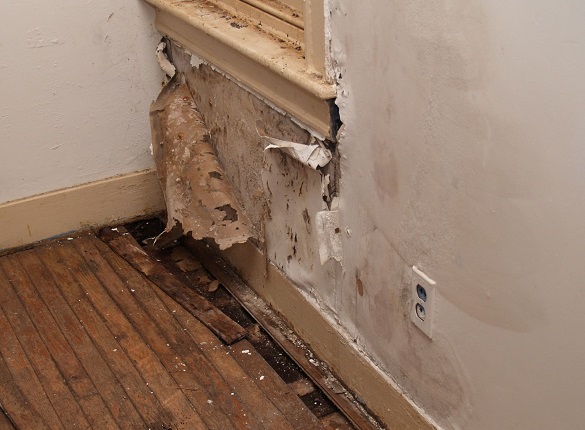 So the floodwaters have receded and the debris has been cleared. Can you move back into your property now? Not quite. Water damage might have affected your home, the effects of which could require water damage restoration. To come up with a comprehensive water damage restoration plan, experts must thoroughly assess the extent of the situation. We answer these 5 questions to make an accurate evaluation.
So the floodwaters have receded and the debris has been cleared. Can you move back into your property now? Not quite. Water damage might have affected your home, the effects of which could require water damage restoration. To come up with a comprehensive water damage restoration plan, experts must thoroughly assess the extent of the situation. We answer these 5 questions to make an accurate evaluation.
Q: How will the extent of the water damage affect the water damage restoration process?
A: Flooding contained within a certain area will require straightforward water damage restoration procedures. Water seeping into the ceiling or floorboards will need the attention of an experienced water damage restoration professional.
Q: Can the water damage affect the structural integrity of my home?
A: It might. Leaking pipes and indoor flooding can weaken the drywall, which can sag, or even worse, collapse due to water damage. Water-saturated drywall panels in the walls or ceilings must be replaced as soon as possible. Other areas prone to water damage include the garage and the roof.
Q: What are the different types of water damage and how does each one affect the water damage restoration process?
Category 1 water damage is usually caused by busted pipes, overflowing sinks, or excessive rainwater. You’re less likely to get sick due to Category 1 water damage and this can easily be resolved as long as it is fixed within 48 hours.
Category 2 water damage comes from equipment discharges and chemical wastes like pesticides or solvents. Related illnesses can range from mild to severe if left untreated.
Category 3 water damage contains sewage, pathogens, grease, oil, or human waste. Exposure to Category 3 water damage can cause serious illnesses. This type of water damage is best left in the hands of your water damage restoration professional.
Q: What should you do if water has come in contact with our property’s electrical system?
A: To ensure your safety, completely shut off the power supply before commencing any water damage restoration work. Check for gas leaks and potential fire hazards while you’re at it – make sure to wear protective gear while doing this. Confirm with local authorities or with your trusted water damage restoration professional if it’s safe to re-enter the property.
Q: Mold infestations are usually an aftermath of a water damage incident. How can this be prevented?
A: Err on the side of caution and assume that a water damage incident can lead to mold growth. Mold remediation procedures include removing wet rugs, carpets, and furniture immediately, drying wet surfaces, maintaining humidity levels at below 50%, increasing natural ventilation throughout your property, and sanitizing all surfaces to eliminate bacteria and the possibility of mold.
Not only can water damage disrupt your life, it can also be expensive if left unresolved. Residents of Middle Tennessee can enjoy peace of mind in knowing Rytech’s IICRC-certified water damage restoration technicians are available 24/7. Get in touch with us today for a no-commitment consultation.
Rytech Nashville has become a leader in the water damage restoration and mold remediation industry. From its humble beginnings in one location, the company has reached exponential growth and currently provides service to 49 major markets across 25 states. Call (615) 751-8445 for more information.
 InformatioNation InformatioNationBlog.com
InformatioNation InformatioNationBlog.com